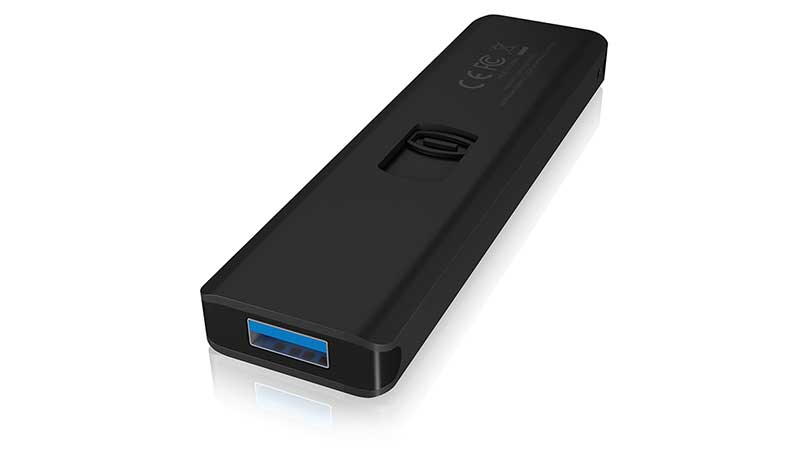M2 external box
Small USB3 enclosure for an M2 SSD. Aluminium case is too heavy, and once plugged in, the weight tends to collapse it and bend the USB port.
Whether you're travelling on business, on holiday or on the road, the ICY BOX IB-1818-U31 M.2 SSD enclosure is ready for anything. With its sliding mechanism and USB 3.1 (Gen 2) Type-A connection, this aluminium case is ready to follow you anywhere, securely in your pocket. And with itsUSB 3.1 Gen 2 interface, you can expect speeds of up to 10 Gbps.

TheICY BOX IB-1818-U31 supports M.2 SSDs in lengths of 22 x 42 mm, 22 x 60 mm and 22 x 80 mm. It is almost as easy to use as a desktop unit and does not require you to install any drivers. This makes it easy to use on any computer.
The USB port of theICY BOX IB-1818-U31 is protected from damage by its retractable mechanism. Your data stored on the drive is easily accessible if you need it.

 Select your criteria
Select your criteria
General information |
Product name |
ICY BOX IB-1818-U31 |
Brand |
ICY BOX | |
Model |
IB-1818-U31 | |
Main characteristics |
Enclosure type |
External |
Interface with the computer |
USB 3.1 | |
Hard drive informations |
Hard drive format |
M.2 |
Internal interface |
M.2 - SATA 6Gb/s | |
Max number of discs |
1 | |
Design |
Extractable drawer |
No |
Material(s) |
Plastic | |
| Aluminum | ||
Color |
Black | |
Luminous |
No | |
Physical characteristics |
Width |
30 mm |
Height |
10 mm | |
Depth |
110 mm | |
Weight |
38 g | |
Warranties |
Commercial warranty |
Seller 2 years
|
Legal warranty |
See terms & conditions
|
See all ICY BOX products
Product referenced on 12 Sep 2019
Small USB3 enclosure for an M2 SSD. Aluminium case is too heavy, and once plugged in, the weight tends to collapse it and bend the USB port.
As a computer technician (or system administrator, depending on the moment), this allows me to boot my second computer on an alternative operating system (thanks to Windows To Go).
Personally, I have not had any problems with the use of this box.
But here are some important information if you want to buy this kind of box:
- When you buy an SSD, it is not initialized or partitioned.
It is therefore normal that it does not appear in the Windows file explorer (in "Computer" or "This PC").
To be able to use it, you will have to initialize it and create a partition on it via the Windows disk management. (Right click on "Computer" or "This PC", then click on : Manage -> Disk Management.
- You must use an M.2 SSD with the "B" or "B+M" key.
Avoid M.2 NVMe SSDs. Only use an M.2 SSD WITHOUT the "NVMe".
Note that the BIOS of your motherboard and Windows will detect the SSD inside and not a "USB key", even if this case looks like one.